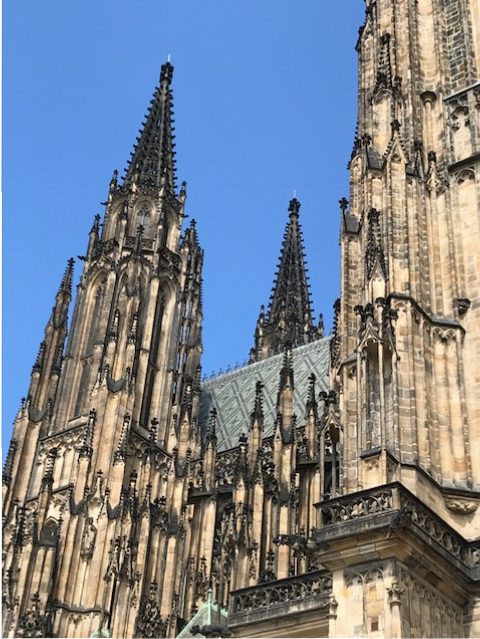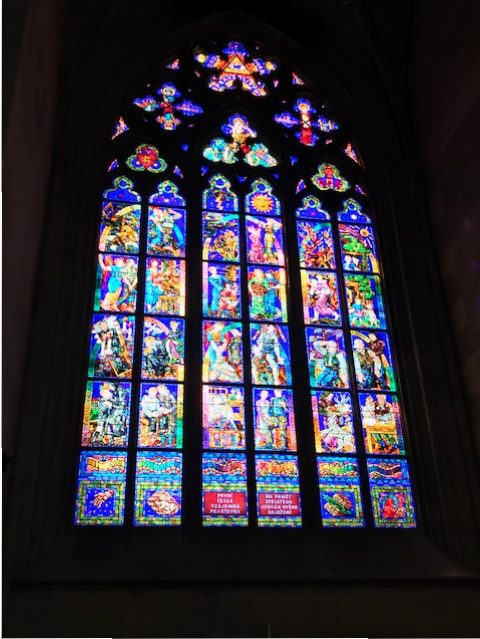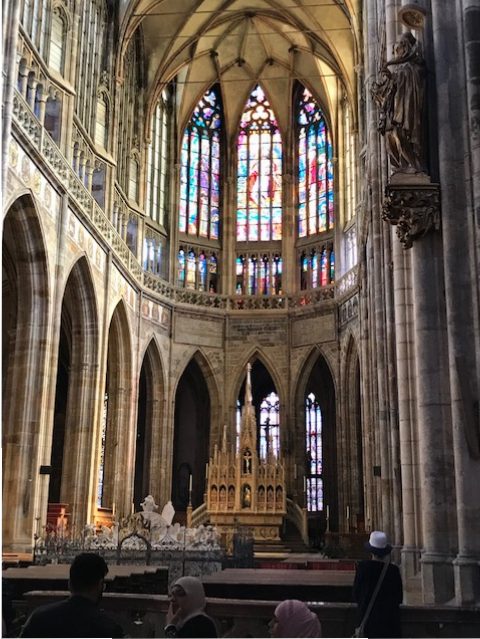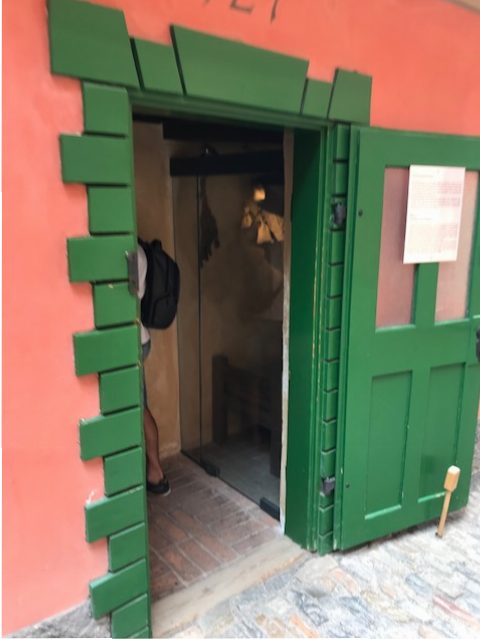Prague is home to one of the largest castles in Europe and we went to see it along with hundreds of other tourists. We took the tram to the top of the hill…most castles are on a hill because they are fortresses. We arrived, along with many others, and took our turn “oohing and aahing” over the hugeness of it. It dates back to the 9th century.
What impressed me the most were the cathedral, the vistas, and the tiny houses.


On the castle grounds is the Gothic style St. Vitus Cathedral. There was an earlier church on this site in 952 but this cathedral’s construction began in 1344 and was not completed until 1929. Even today, the Cathedral is steadily being restored. It has two tall spires, 270’ high, and is very impressive. It has spectacular stained-glass windows, and one amazing window painted to look like a stained-glass window and it’s hard to tell the difference. There is so much history and opulence inside these cathedral walls.


There were great views of the picturesque city of Prague from the castle on the hill. Prague is a beautiful city with the Vltava River running through it and diverse, beautiful architecture everywhere, complete with burnt-orange clay tiled roofs.


And then there is Golden Lane.

Golden Lane is a row of tiny houses built into the castle wall. It was a medieval merchant street and it captured my interest. The houses, I’m guessing, were approximately 8′ X 10′.
In 1484 a fortification of the north wall of the castle formed some kind of vaults that were used to house “lesser goldsmiths” until the revamping of the wall in 1591-94 when repairs were made to the vaults. In 1597 artillery men at the gate of Prague Castle asked permission to build little houses within the newly repaired walls which would take up only the depth of the original niches (vaults). The King agreed, however, the dwellings were not given to the men, they had to build them at their own expense. The houses were occupied until WWII, when the government bought them and now are a part of the history of the castle.
Even though the lane was overcrowded with tourists, it was quaint and fun to see these tiny houses that were built so long ago (and I thought the concept of tiny houses was a new one.)

What I find amusing is that we were surrounded by the opulence and magnificence of the castle and I was intrigued by one row of tiny houses built into the castle wall.
Seeing the grand castle and the tiny houses made my own modest home back in Minnesota feel “just right.”